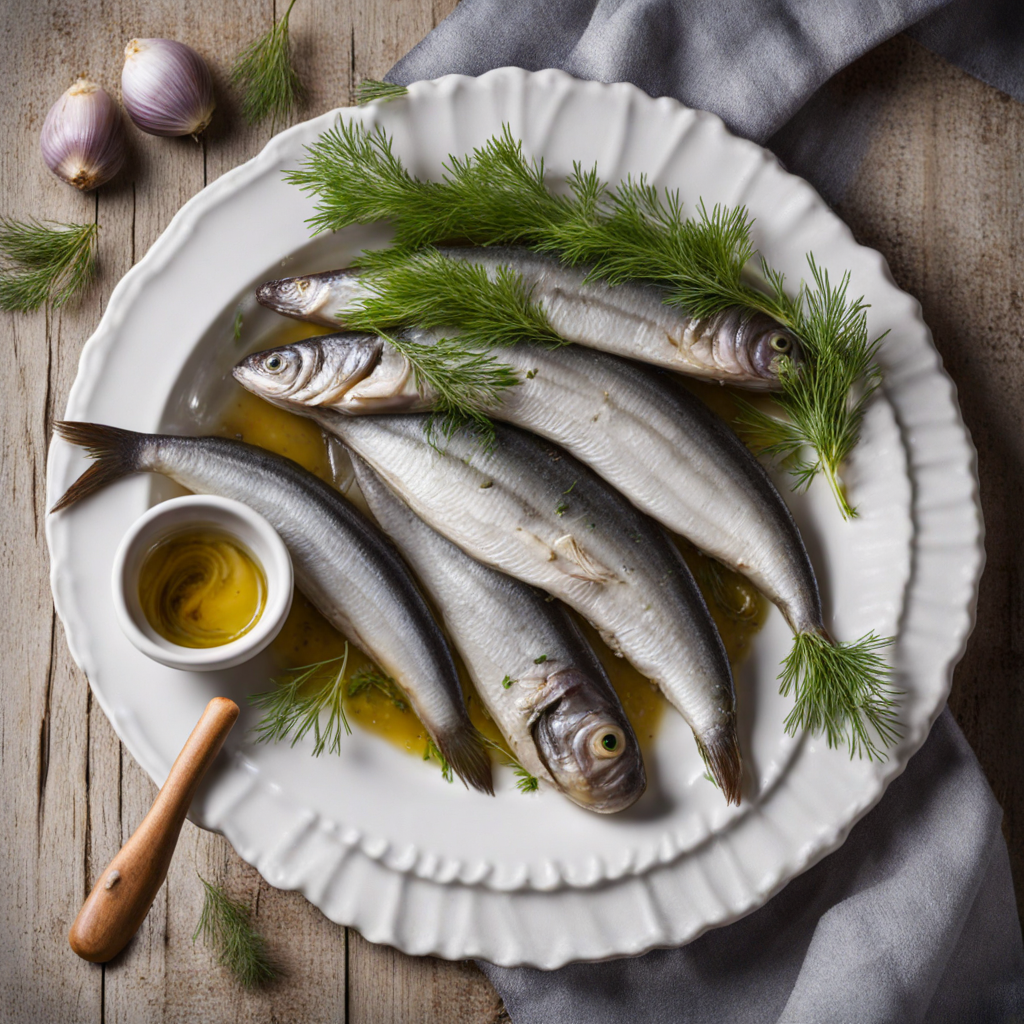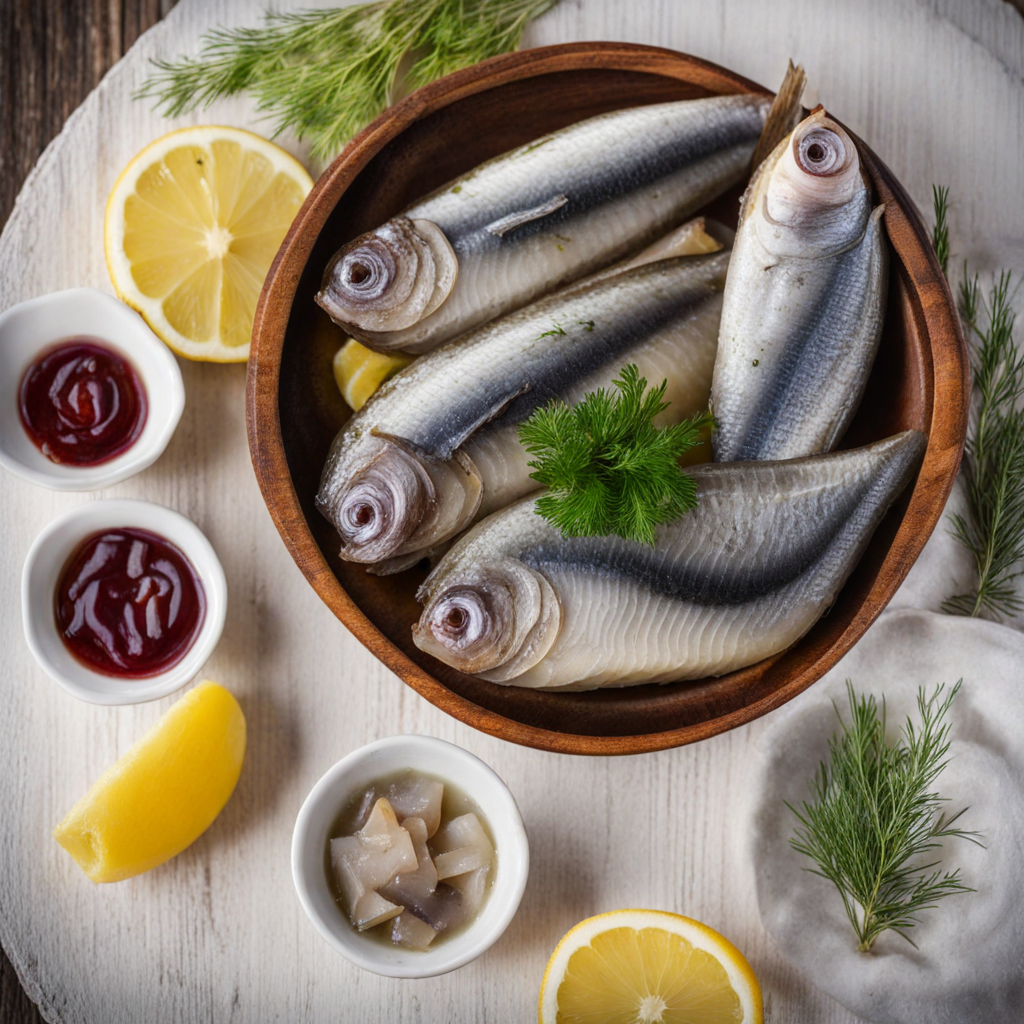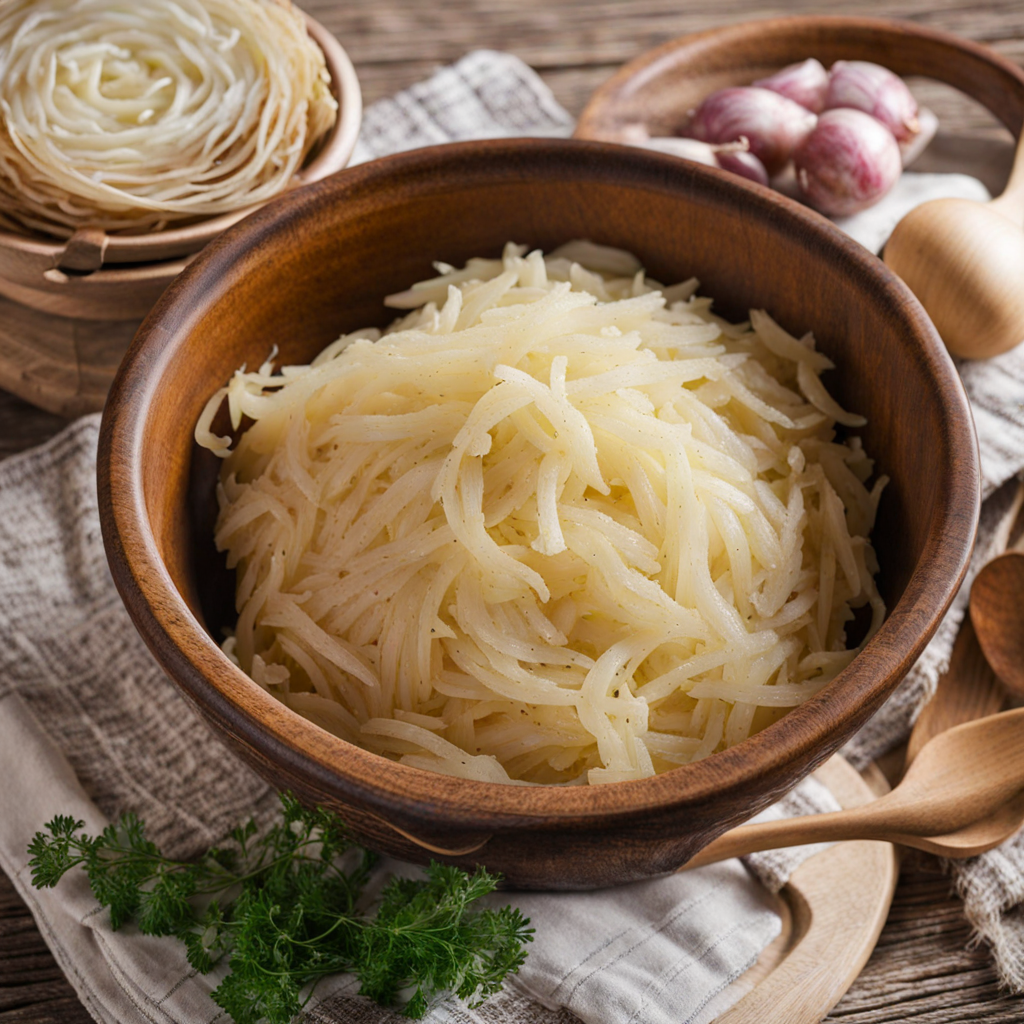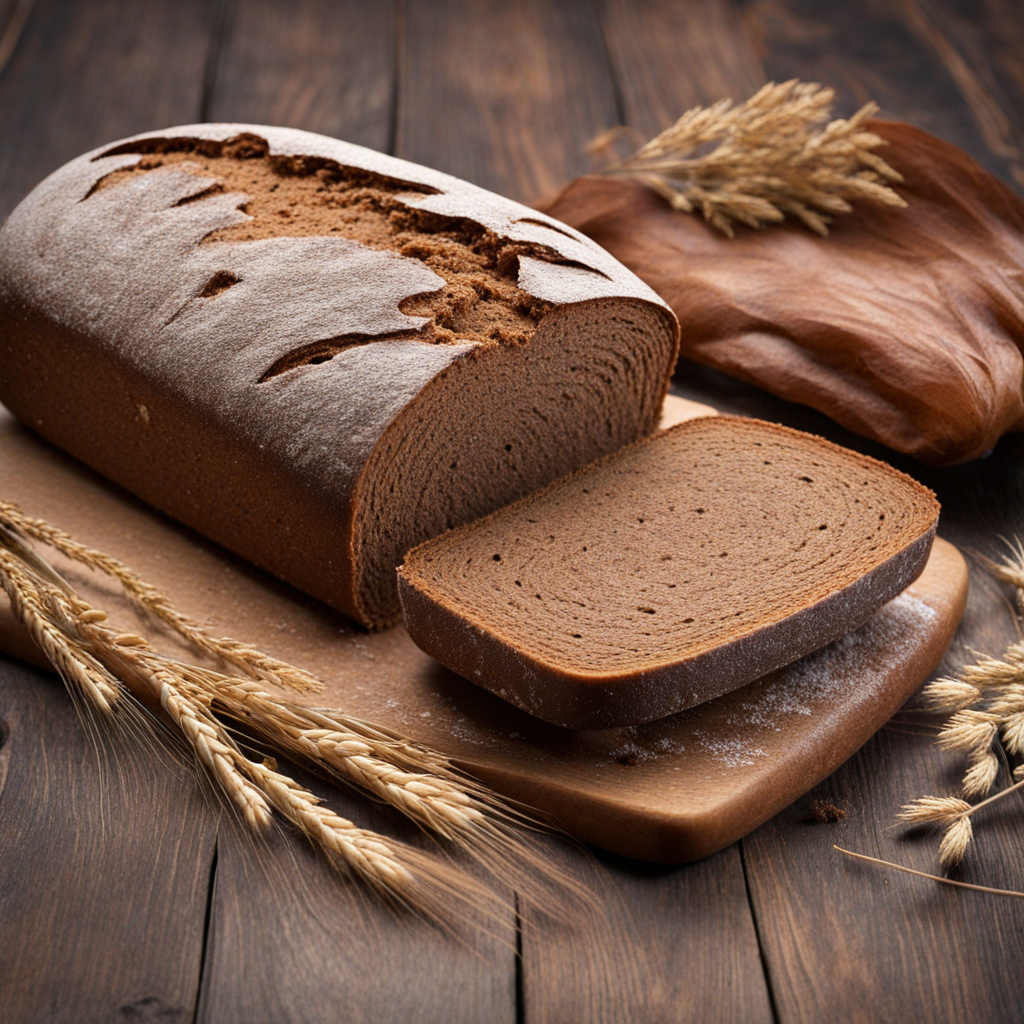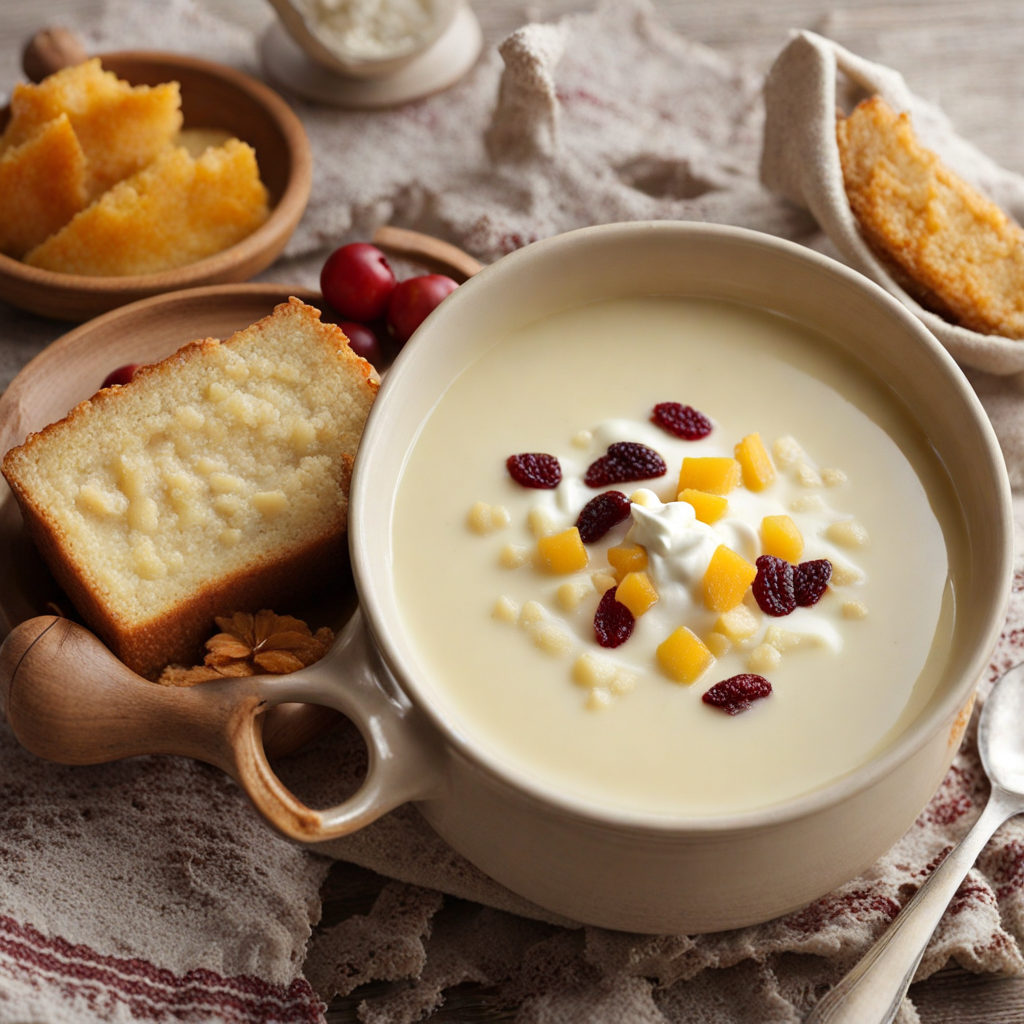Latvian Herring
Latvian Herring, or "zivju maizītes," offers a delightful exploration of flavors that showcases the natural bounty of the Baltic Sea. This traditional dish typically features fresh herring, marinated to enhance its inherent brininess and paired with a variety of vibrant accompaniments. The herring is often pickled or salted, providing a tangy and slightly smoky profile that awakens the palate, making it a staple in Latvian cuisine, especially during festive gatherings and holidays. Accompanying the herring are a medley of ingredients that elevate its taste and texture. Creamy potato salad, seasoned with dill and onions, adds a comforting element, while crisp rye bread serves as the perfect base. The addition of beets, often grated or sliced, introduces a sweet earthiness that complements the fish beautifully. These elements come together harmoniously, creating a dish that is not only visually appealing but also a delightful balance of salty, sweet, and creamy notes. Served cold, Latvian Herring can be enjoyed on its own or as part of a larger spread, often accompanied by a shot of traditional Latvian vodka. The experience of tasting this dish is as much about the communal sharing as it is about the flavors, inviting friends and family to gather around the table. For those eager to explore the depths of Baltic culinary traditions, Latvian Herring offers a unique and memorable journey through the rich cultural heritage of Latvia.
How It Became This Dish
Latviešu siļķe, or Latvian herring, is a traditional dish that holds a significant place in the culinary heritage of Latvia. This beloved seafood dish is not only a staple in Latvian cuisine but also reflects the historical and cultural identity of the Latvian people. Its origins can be traced back to the coastal regions of the Baltic Sea, where fishing has been a fundamental part of life for centuries. The herring, a small, oily fish, has long been a vital source of nutrition and sustenance due to its abundance in the cold Baltic waters. The method of preserving herring through pickling or marinating has roots in ancient practices designed to prolong the freshness of fish. This technique became especially crucial in the harsh winters of Latvia, when fresh food was scarce. By pickling herring in vinegar, sugar, and spices, Latvians were able to create a flavorful dish that could be enjoyed year-round. The incorporation of various ingredients, such as onions, carrots, and spices, not only enhanced the flavor but also made the dish visually appealing, often served in layers with vibrant colors. As the centuries progressed, the significance of Latviešu siļķe evolved beyond mere sustenance. In the 19th century, during a period of burgeoning nationalism and cultural revival, Latvians began to embrace their culinary heritage as a means of asserting their identity. Traditional foods like herring became symbols of national pride, and recipes were passed down through generations, often accompanied by stories and memories that connected families to their roots. This cultural renaissance coincided with a growing appreciation for local ingredients and traditional cooking methods, further solidifying the place of herring in Latvian cuisine. In modern times, Latviešu siļķe has maintained its status as a beloved dish, often featured on festive occasions and family gatherings. It is common to find herring served at Christmas tables, weddings, and other celebrations, where it is typically accompanied by dark rye bread, potatoes, and sour cream. The dish is often presented in an elaborate manner, layered with colorful vegetables and garnished with dill, showcasing the artistry of Latvian culinary traditions. The preparation of Latviešu siļķe can vary significantly from one household to another, with regional variations reflecting local tastes and available ingredients. For example, in the coastal regions, herring may be prepared with a focus on fresh herbs and local vegetables, while inland variations might incorporate more root vegetables and grains. This adaptability highlights the versatility of herring as an ingredient and the creativity of Latvian cooks. Additionally, the role of herring in Latvian cuisine has been influenced by historical trade routes and interactions with neighboring cultures. The influence of German, Swedish, and Russian cuisines is evident in the various methods of preparation and the introduction of new ingredients. For instance, the traditional Russian dish "selyodka pod shuboy," or herring under a fur coat, has inspired many Latvians to adopt layered salads featuring herring, potatoes, and beets, showcasing the dish's ability to transcend cultural boundaries while retaining its core essence. In the context of food sustainability, the continued appreciation for Latviešu siļķe has prompted discussions about sustainable fishing practices. As fishing regulations become more stringent to protect fish populations, the importance of responsible sourcing has gained traction among consumers. Many Latvians are now more conscious of the origins of their fish and are increasingly opting for sustainably caught herring. This shift not only honors the traditional practices of their ancestors but also ensures that future generations can enjoy this iconic dish. Beyond its culinary significance, Latviešu siļķe also serves as a cultural touchstone for Latvians living abroad. Emigrants have often used traditional foods as a way to maintain connections to their homeland, and herring has become a symbol of nostalgia and cultural pride. In diaspora communities, the preparation of herring at family gatherings and cultural festivals helps to preserve Latvian traditions and strengthen bonds among generations. The presentation of Latviešu siļķe has also evolved in contemporary Latvian cuisine, with chefs experimenting with modern techniques while paying homage to traditional flavors. Some restaurants have taken the dish to new heights, offering innovative interpretations that blend local ingredients with international culinary trends. This fusion approach not only caters to modern palates but also introduces Latviešu siļķe to a broader audience, helping to elevate it beyond its humble origins. Moreover, the growing interest in food tourism has contributed to the revival of traditional Latvian dishes, including herring. Culinary festivals and workshops throughout the country often feature herring as a key ingredient, inviting both locals and visitors to engage in its preparation and appreciation. These events serve as both educational and celebratory occasions, reinforcing the cultural significance of herring in Latvian society. As Latvia continues to navigate its place in a globalized world, Latviešu siļķe stands as a testament to the resilience of Latvian culinary traditions. It encapsulates the history, culture, and identity of a nation that has weathered many storms yet remains proud of its heritage. The dish not only nourishes the body but also fosters a sense of belonging and community, reminding Latvians of their shared history and cultural roots. In summary, the story of Latviešu siļķe is intertwined with the history of Latvia itself. From its origins as a practical means of sustaining communities through harsh winters to its role as a cherished symbol of national identity, the dish continues to evolve while remaining deeply rooted in tradition. Through its preparation and consumption, Latviešu siļķe embodies the spirit of Latvia, celebrating both its past and its present.
You may like
Discover local flavors from Latvia


